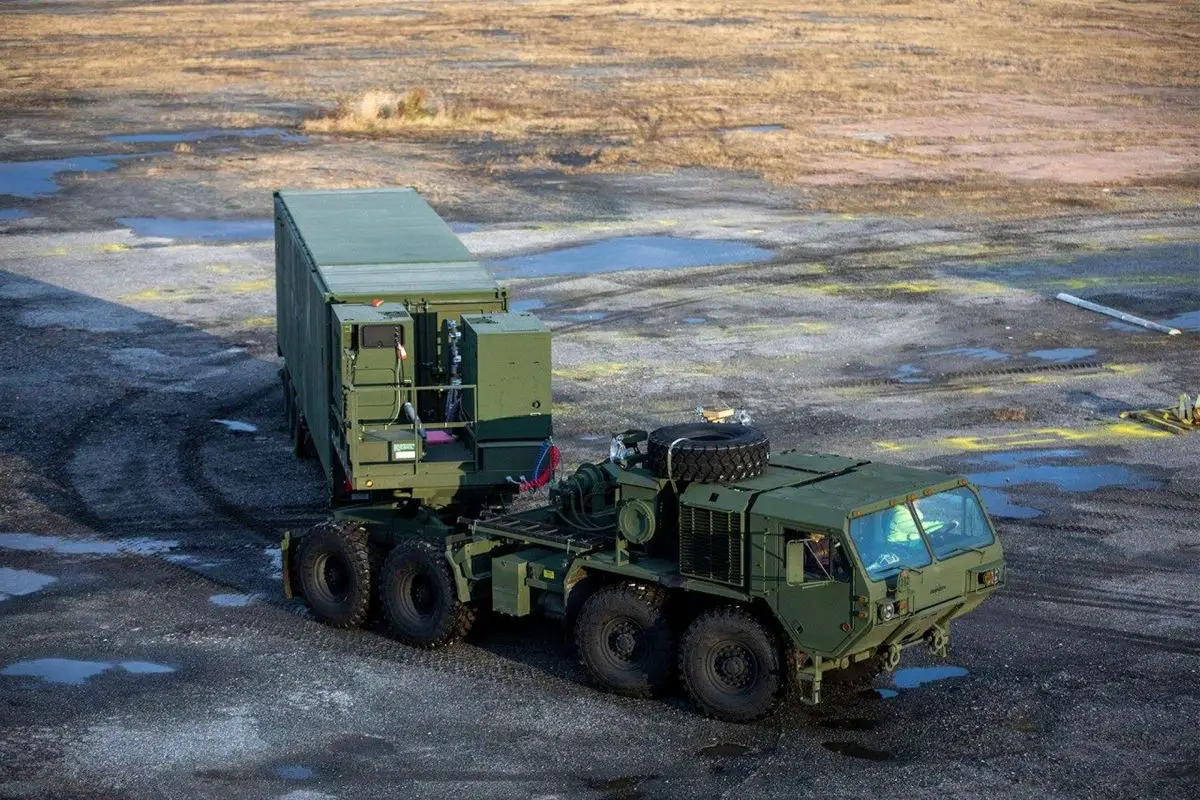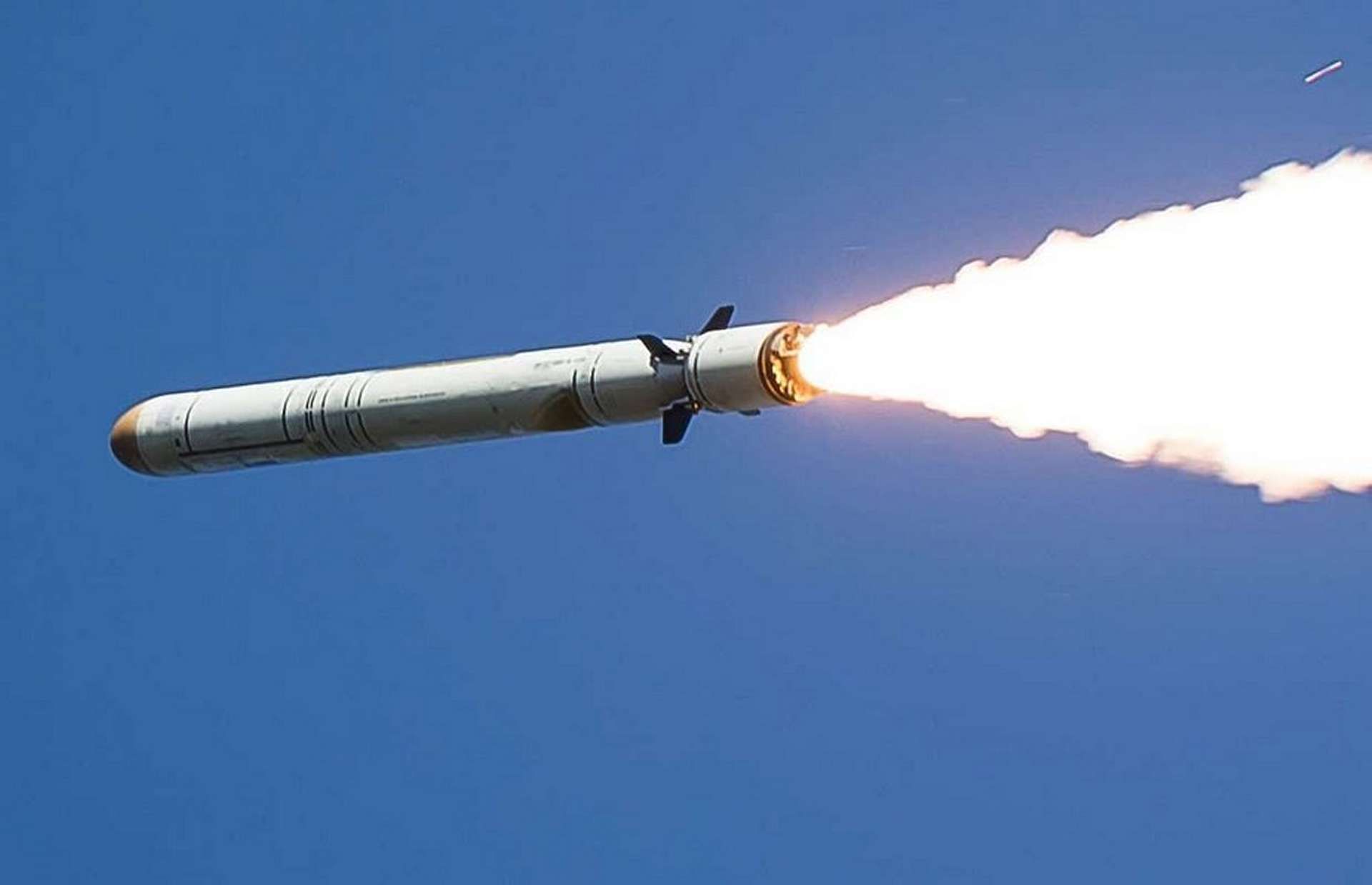Breaking News
US Army eyes deployment of Typhon mid-range missile system to Japan for joint exercises.
As reported by The Japan Times on September 7, 2024, the United States has shown interest in deploying a Mid-Range Capability (MRC) missile system to Japan for joint military exercises, according to U.S. Army Secretary Christine Wormuth. Wormuth mentioned during an event in Virginia earlier this week that discussions about deploying the Army’s Multi-Domain Task Force, which includes the MRC missile system known as the Typhon, were held during her visit to Japan last month.
Follow Army Recognition on Google News at this link

U.S. Army Secretary Christine Wormuth indicated that the U.S. has expressed interest in deploying the Multi-Domain Task Force, which is responsible for the Mid-Range Capability (MRC) missile system, in Japan. (Picture source: Lockheed Martin)
Wormuth stated, “I had a great visit to Japan, a great discussion with (Defense) Minister (Minoru) Kihara,” adding that the U.S. would be “very interested” in seeing the Multi-Domain Task Force operate out of Japan in future exercises. She also noted that the U.S. had expressed interest in this deployment to the Japanese Self-Defense Forces and emphasized that any such move would proceed “at the pace of the Japanese government.” The Typhon launcher, capable of firing Tomahawk cruise missiles with a range of 1,600 kilometers and SM-6 missiles, was deployed to the Indo-Pacific region for the first time in April for joint military exercises in the northern Philippines. This deployment is scheduled to conclude this month. It marks the first time the U.S. has sent ground-based intermediate-range missiles abroad since withdrawing from the 1987 Intermediate-Range Nuclear Forces Treaty in 2019.
The Intermediate-Range Nuclear Forces (INF) Treaty, signed on December 8, 1987, by the United States and the Soviet Union, required both nations to eliminate their nuclear and conventional ground-launched ballistic and cruise missiles with ranges between 500 and 5,500 kilometers. The treaty, signed by U.S. President Ronald Reagan and Soviet General Secretary Mikhail Gorbachev, came into effect on June 1, 1988, and led to the destruction of 2,692 missiles by May 1991. It did not apply to air- or sea-launched missiles and included provisions for on-site verification inspections over a ten-year period to ensure compliance.
On August 2, 2019, the United States formally withdrew from the INF Treaty, following an announcement by President Donald Trump in October 2018, citing Russian violations of the treaty, specifically the development and deployment of the Novator 9M729 (SSC-8) cruise missile. The Trump administration also argued that the treaty restricted the U.S. in countering China's growing missile capabilities, as China was not a party to the treaty. Russia suspended its participation in response to the U.S. withdrawal, leading to the treaty's expiration and the end of its regulatory framework on intermediate-range nuclear forces between the two countries.

On September 2, 2015, Russia conducted another test of the Novator 9M729 (SSC-8) cruise missile, which the United States claims violates the 1987 INF Treaty. (Picture source: Russian MoD)
Japan has repeatedly denied rumors about hosting U.S. medium-range missiles, while public opinion in Japan remains a significant factor in these discussions. The Japanese Ministry of Defense recently clarified that the United States is not yet prepared to deploy such missiles in Japan. This statement came in response to a report by the Sankei newspaper, which suggested that the U.S. government had proposed deploying medium-range missiles, including hypersonic and Tomahawk missiles, on Japan's southern island of Kyushu. According to the Ministry, U.S. counterparts indicated it was too early to consider specific deployment sites for these new missile systems.
The potential deployment of U.S. missiles in Japan has been a matter of debate, with some analysts suggesting it could face public opposition due to concerns about Japan becoming a target for the People's Liberation Army Rocket Force. This branch of the Chinese military manages China's land-based ballistic, hypersonic, and cruise missile arsenal, both nuclear and conventional, which includes an estimated 1,900 ballistic missiles capable of reaching Japan. This factor has led to hesitation from Japanese authorities, who continue to prioritize national security while balancing diplomatic relations with both the United States and China.
A report from The Japan News noted that while there were considerations for deploying U.S. intermediate-range missiles along the "first island chain" from Japan to the Philippines, this was ultimately deemed unnecessary after Japan decided to develop its counterstrike capabilities. Japan’s national security strategy, approved in December, includes acquiring long-range missiles, such as U.S.-made Tomahawks and upgraded domestically produced Type-12 surface-to-ship missiles, allowing Japan to enhance its defensive capabilities without hosting additional U.S. missiles.

This new version of the Type 12 Surface-to-Ship Missile (SSM) aims to extend the missile's range from 200 kilometers to 900 kilometers initially, with a future target of 1,500 kilometers. (Picture source: Mitsubishi Heavy Industries)
Proponents of the potential deployment argue that it could deter Beijing, especially considering China's expanding military activities around Japan’s southwestern islands near Taiwan. The Typhon system, which includes both Tomahawk cruise missiles and SM-6 missiles, could extend the range of potential targets to areas such as Taiwan, parts of the South China Sea, and significant portions of mainland China. The U.S. military has suggested that deploying such systems is necessary to counterbalance China’s expanding missile capabilities, including ground-launched intermediate-range ballistic missiles that could reach the Nansei Islands and Taiwan.
China, meanwhile, has expressed strong opposition to the potential deployment of U.S. missile systems in the region, arguing that such actions could increase the risk of "misjudgment and miscalculation" and escalate regional tensions. When the U.S. previously deployed similar missile systems to the Philippines, China described the move as a "serious threat" to regional security and stability. The Chinese authorities have not yet officially commented on the possible deployment to Japan, but the reaction is expected to be similarly negative.
Despite Japan's official denials of plans to host such U.S. weapons, there are signs of potential consideration. Lt. Gen. Kazuo Sakai, the chief of staff of Japan’s Ground Self-Defense Force, recently visited the U.S. Joint Base Lewis-McChord in Washington state, where the Typhon system is stationed. Pictures of this visit, showing Sakai and his delegation near the missile system, have led to speculation about Japanese interest. However, Japanese authorities have not officially commented on any agreement or discussion about deploying the Typhon system, reflecting caution likely influenced by domestic concerns and the potential for a Chinese response.

Developed as part of the Army's Long Range Precision Fires program, the Typhon missile system serves as a bridge between the Precision Strike Missile and the Long Range Hypersonic Weapon system. (Picture source: Lockheed Martin)
The U.S. has conducted multiple tests of the Typhon system, which includes four trailer-based launchers and supporting equipment capable of firing both Tomahawk and SM-6 missiles. The SM-6 missiles, described by the U.S. military as a key component in defending against highly maneuverable hypersonic threats, suggest that the Typhon system could be used against a range of targets, from conventional to hypersonic. This capability indicates the system could serve in diverse roles, including missile defense and ground strikes.
The Typhon Mid-Range Capability (MRC) missile system is a U.S. Army transporter erector launcher designed to deploy Standard SM-6 and Tomahawk missiles. Developed as part of the Army's Long Range Precision Fires program, it serves as a bridge between the Precision Strike Missile and the Long Range Hypersonic Weapon system. Initially known as the Strategic Mid-range Fires System (SMRF), the Typhon system has been in service since 2023 and is a modified version of the Mk 70 Mod 1 Payload Delivery System. The launcher is also compatible with the Patriot PAC-3 missile, incorporating specific modifications for Army use.
The Typhon launcher has been involved in several tests and operational deployments. In 2023, the U.S. Army launched both SM-6 and Tomahawk missiles from the system, confirming its capabilities. In April 2024, Typhon batteries were deployed to the Philippines for joint military exercises, extending its operational range over the Luzon Strait and the South China Sea, although it was not used in live-fire exercises. A second battery was activated in January 2024, and future deployments are planned in Germany beginning in 2026, with discussions of potential deployment to Japan as part of broader strategic initiatives.
The structure of a Typhon MRC battery includes four launchers, a battery operations center, and several support vehicles. Originally, the Army planned to develop four SMRF batteries, but adjustments have led to two batteries currently being assigned to the 1st Multi-Domain Task Force (MDTF) as of 2024. The FY 2025 budget includes $183 million for research and development and $233 million for procurement, covering additional Tactical Tomahawks, equipment, and operational centers, indicating ongoing investment in the system. The allocation of batteries may change based on strategic needs, allowing commanders flexibility to adjust deployment between MDTFs.

The U.S. has conducted multiple tests of the Typhon system, which includes four trailer-based launchers and supporting equipment capable of firing both Tomahawk and SM-6 missiles. (Picture source: US DoD)


























